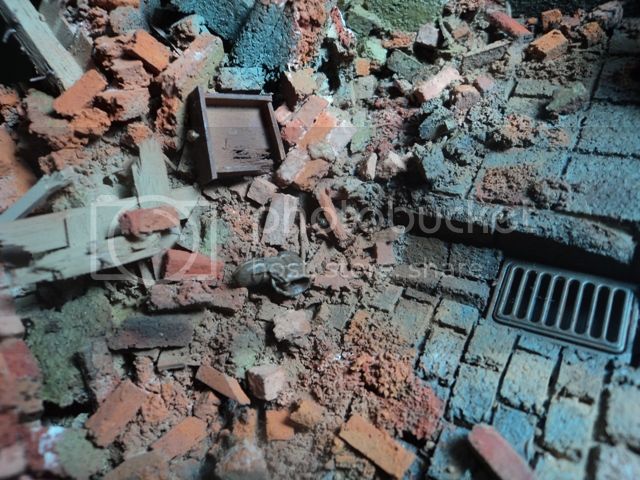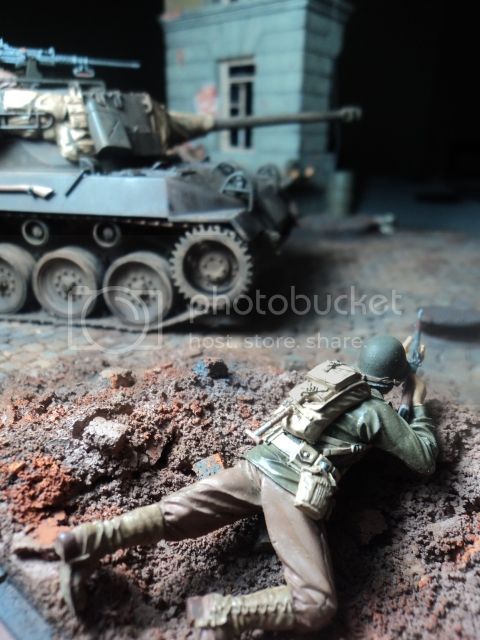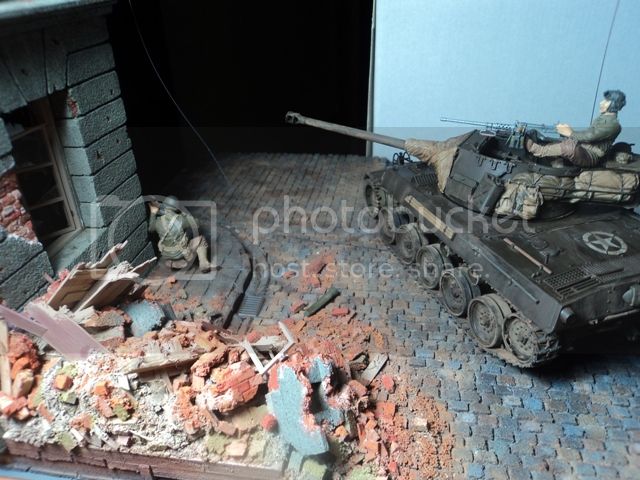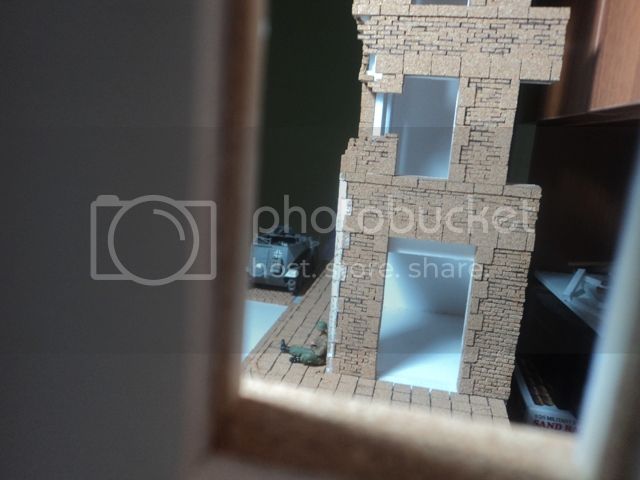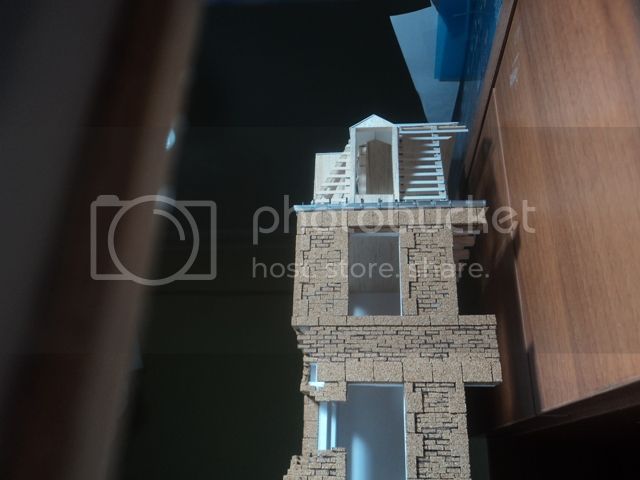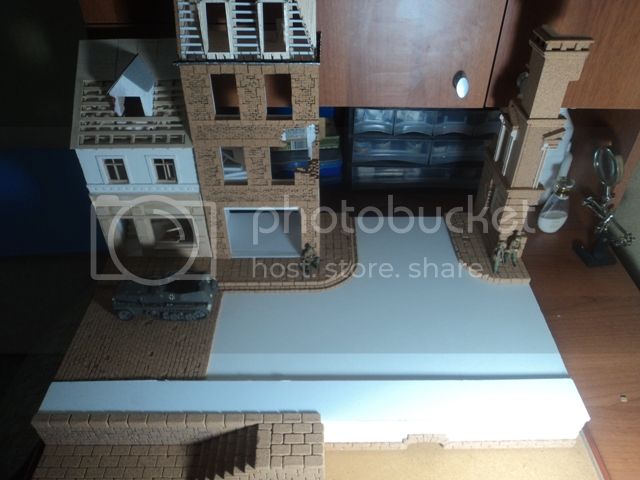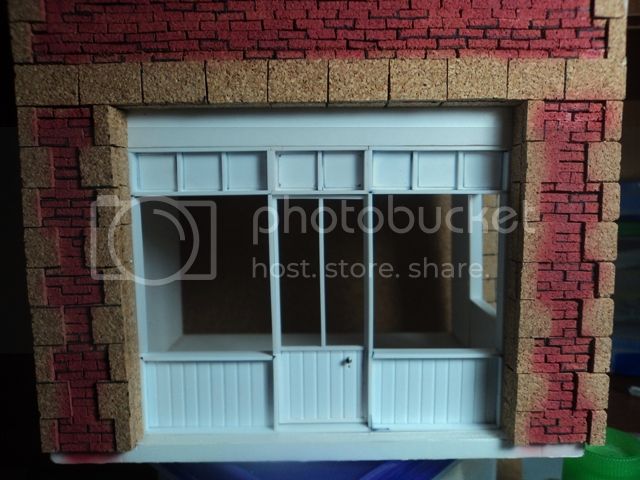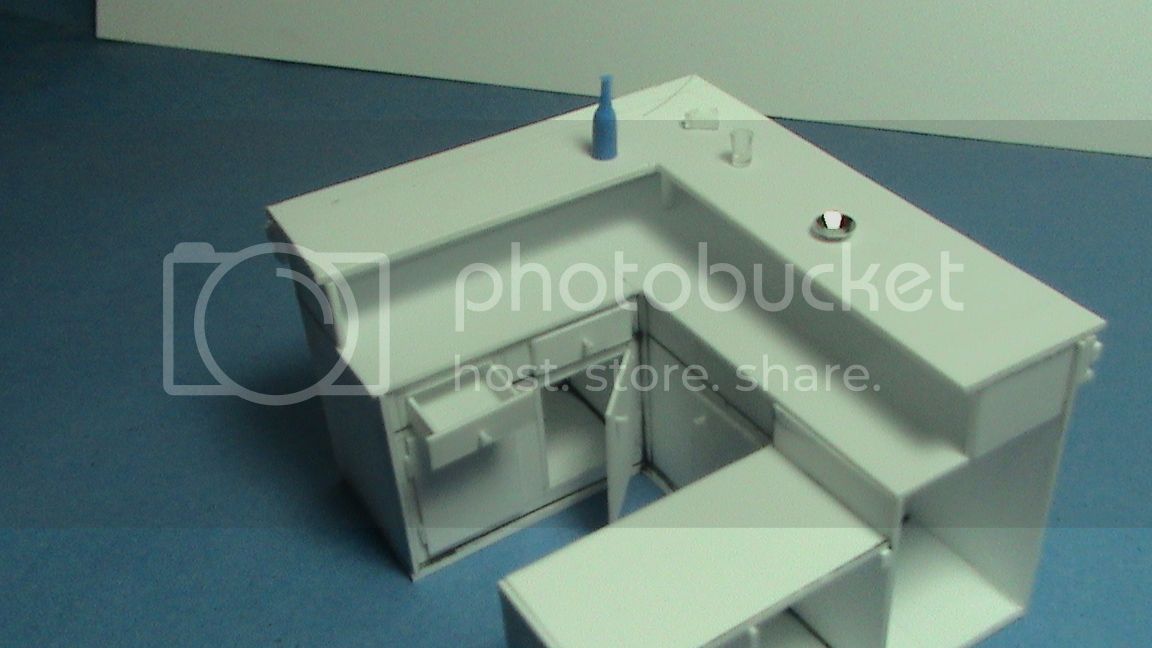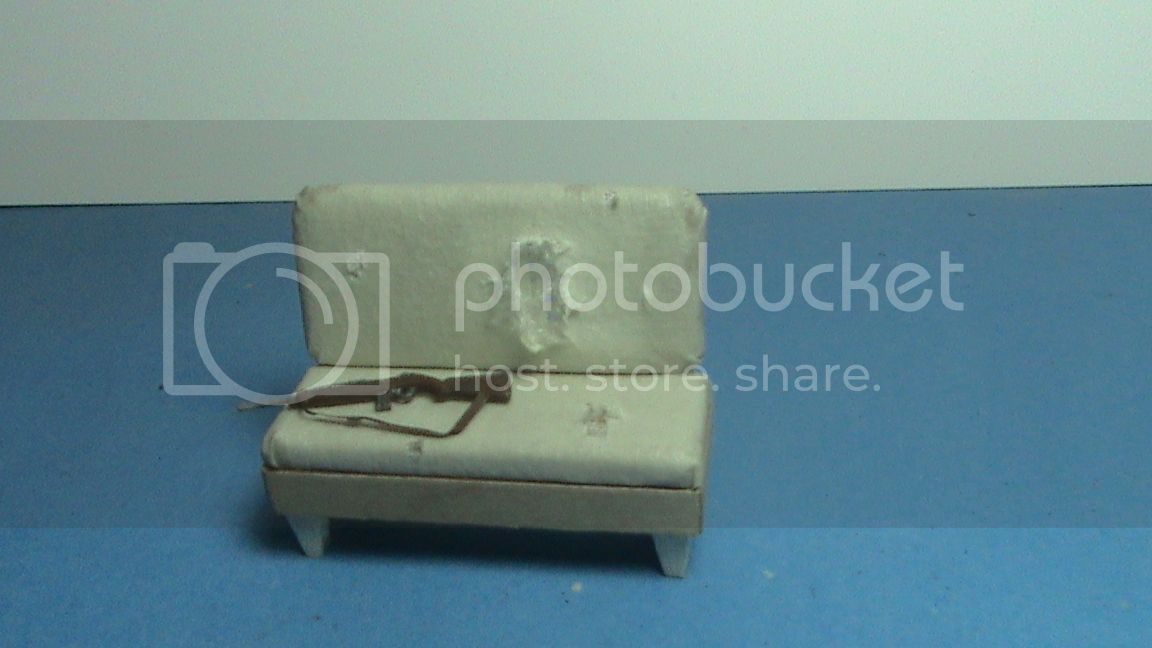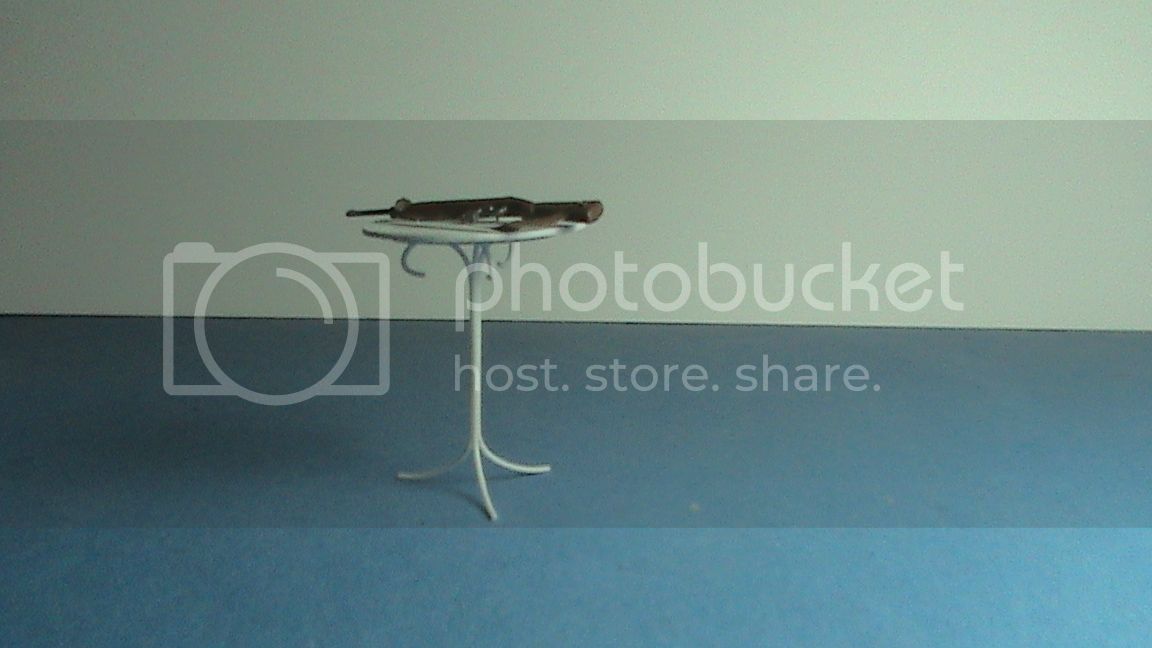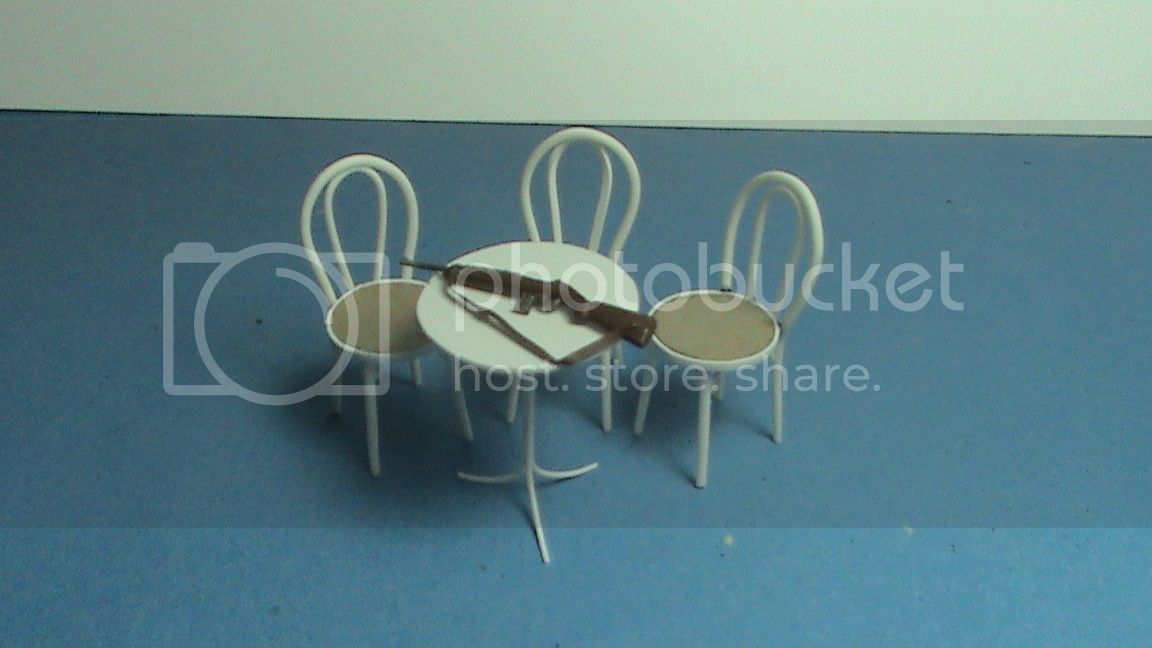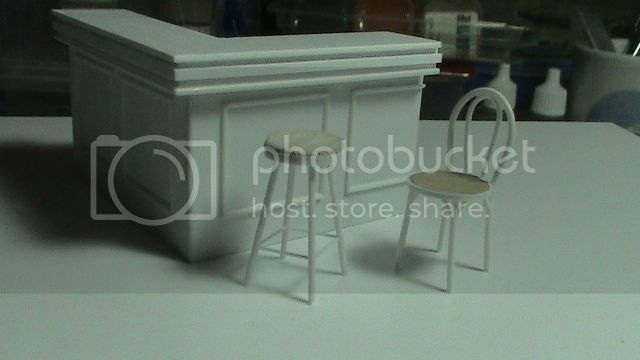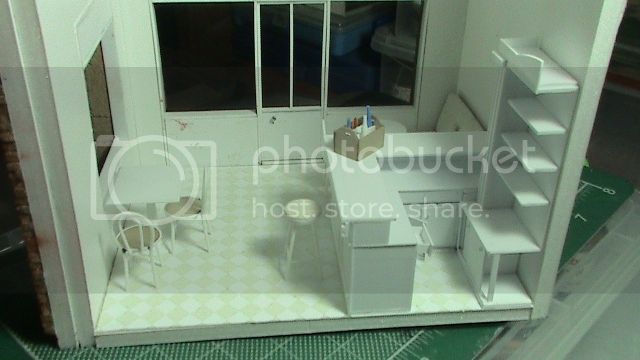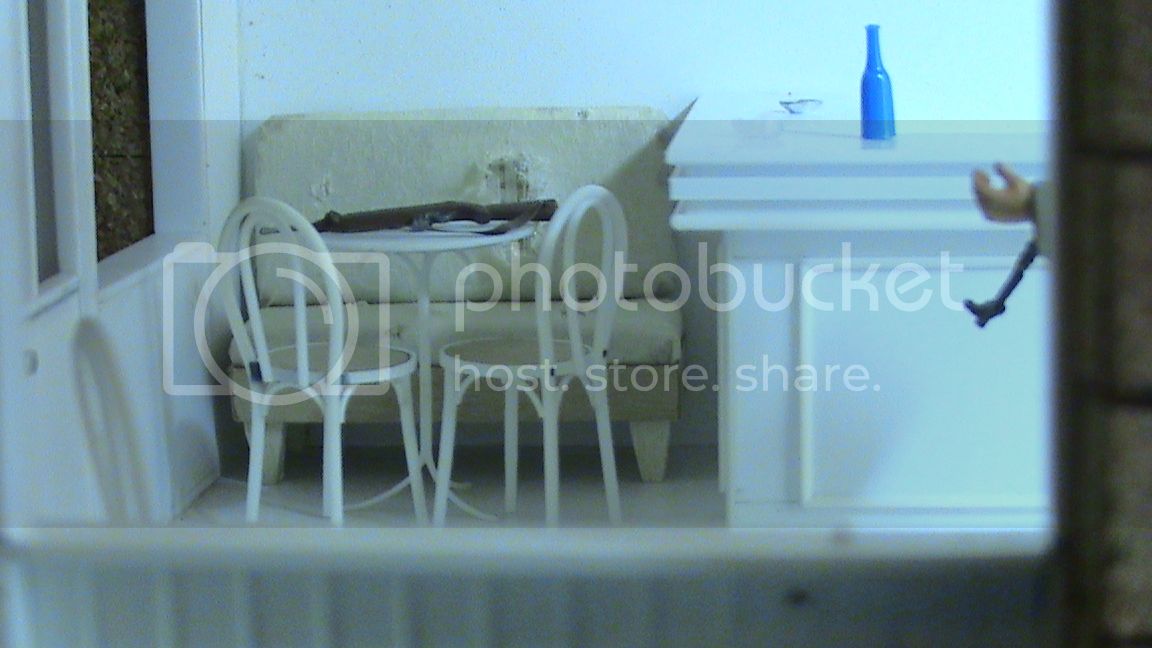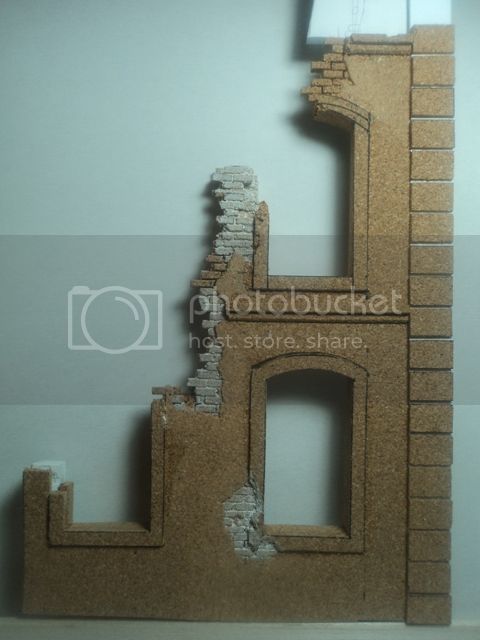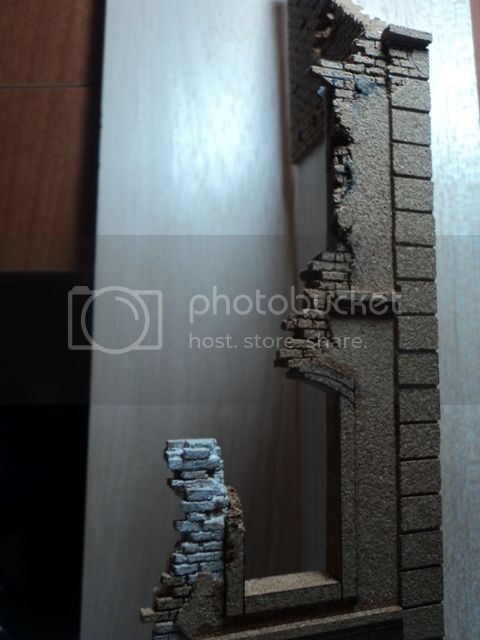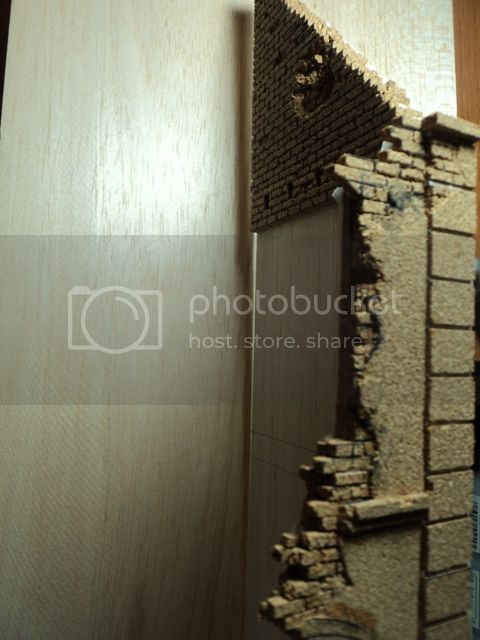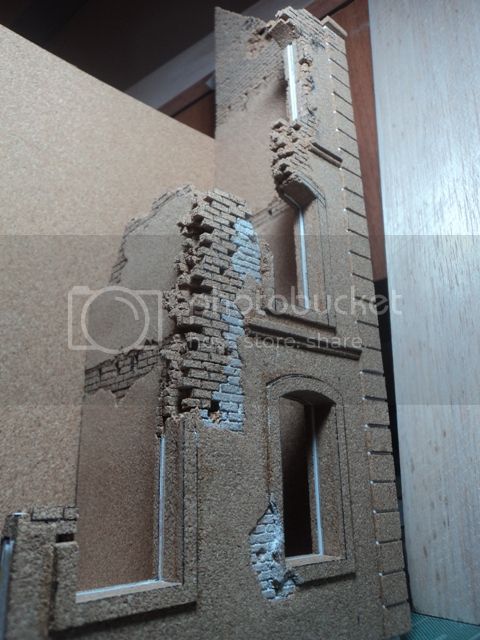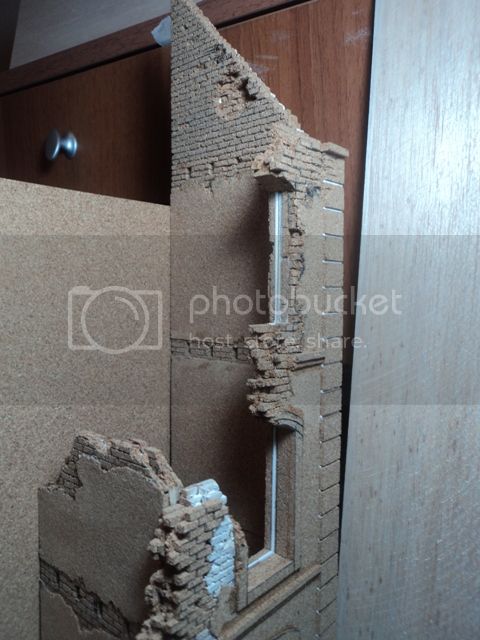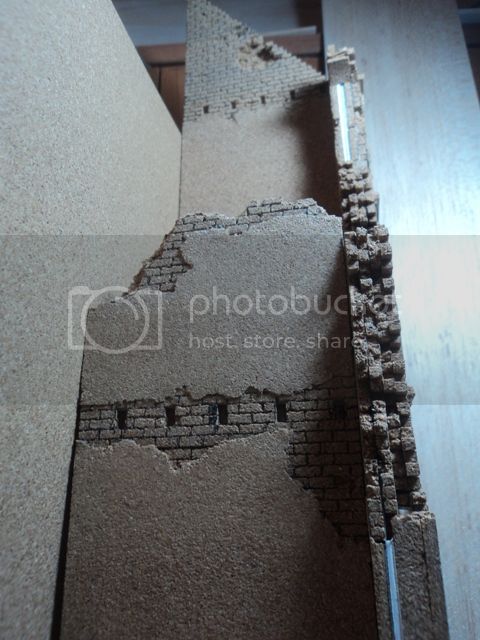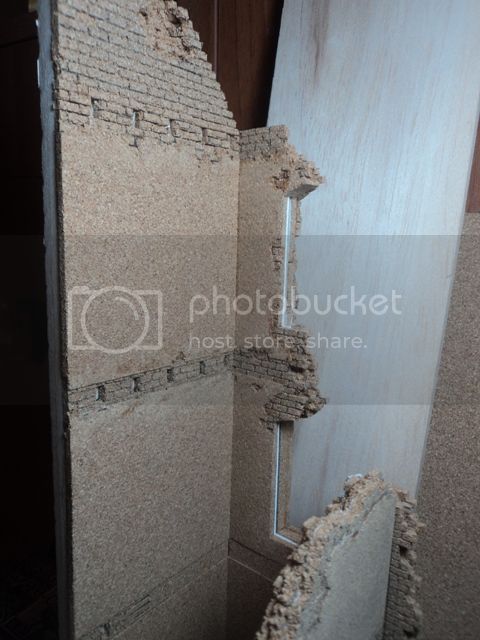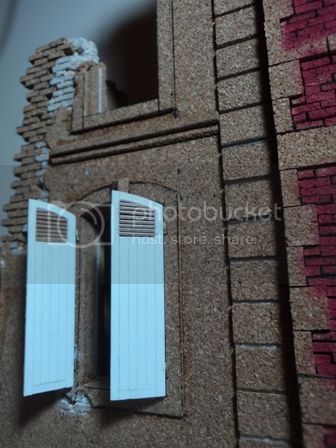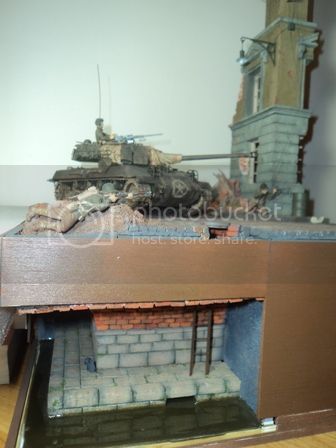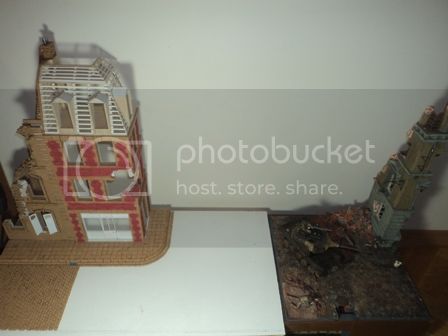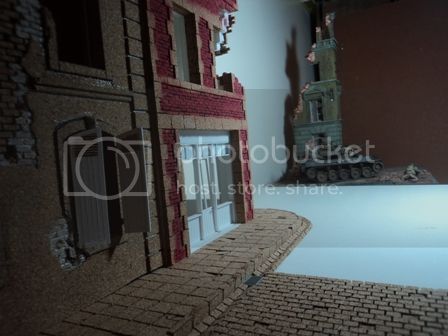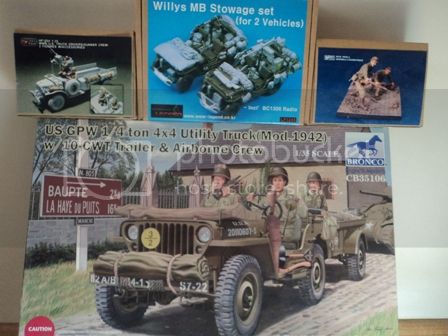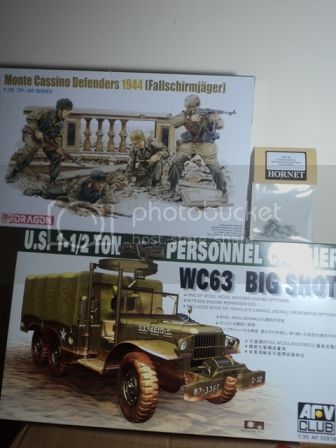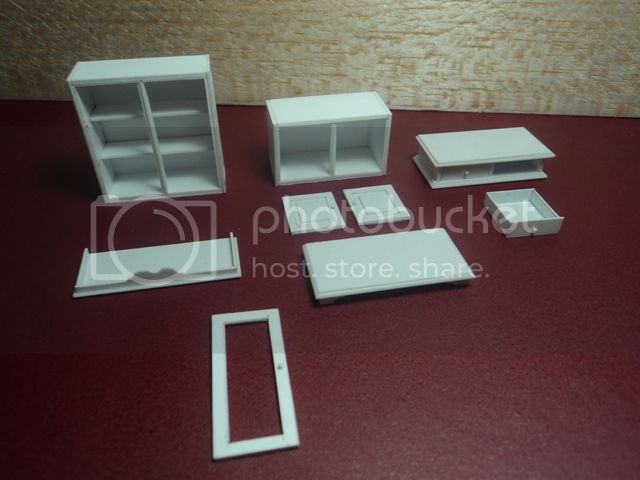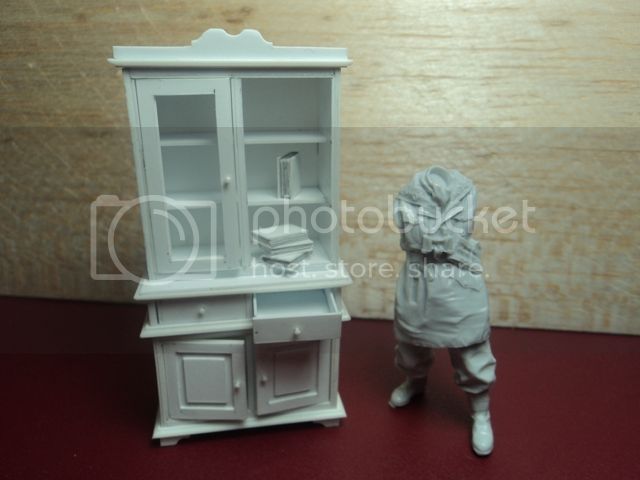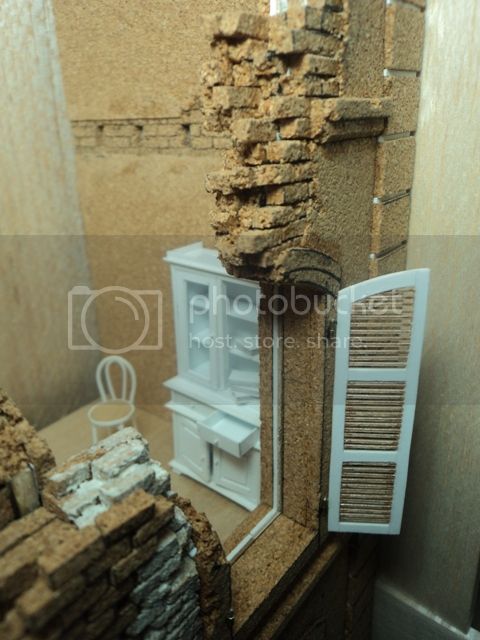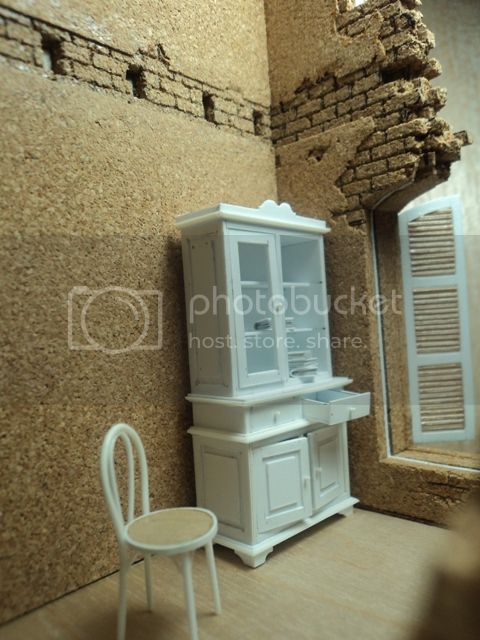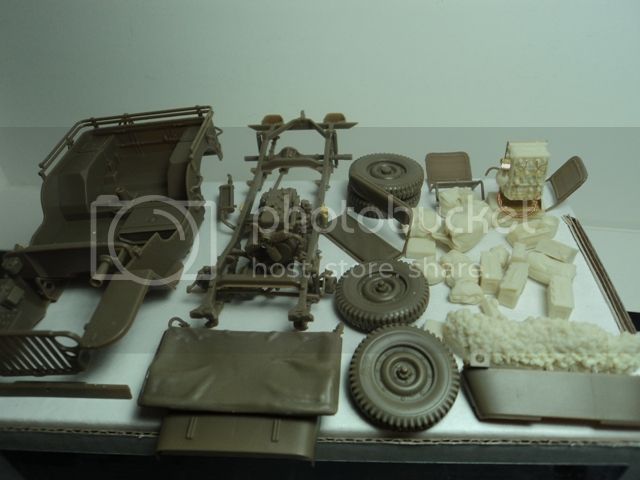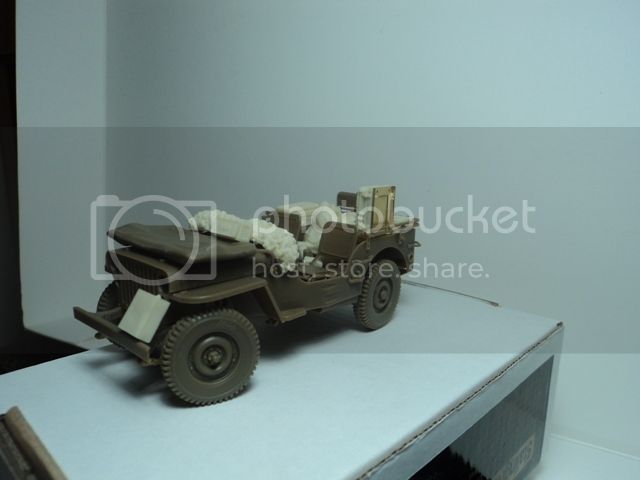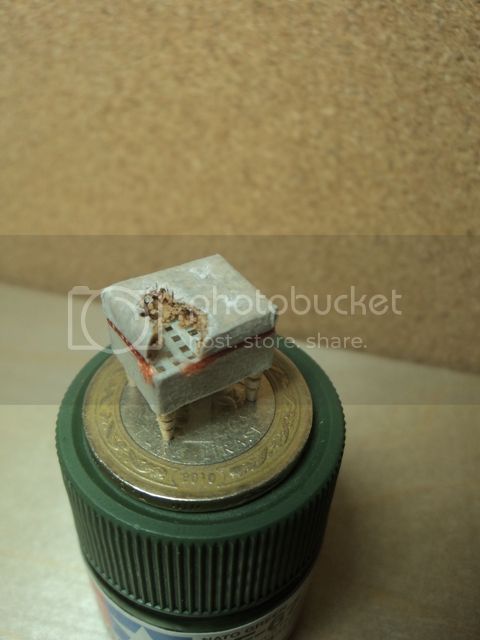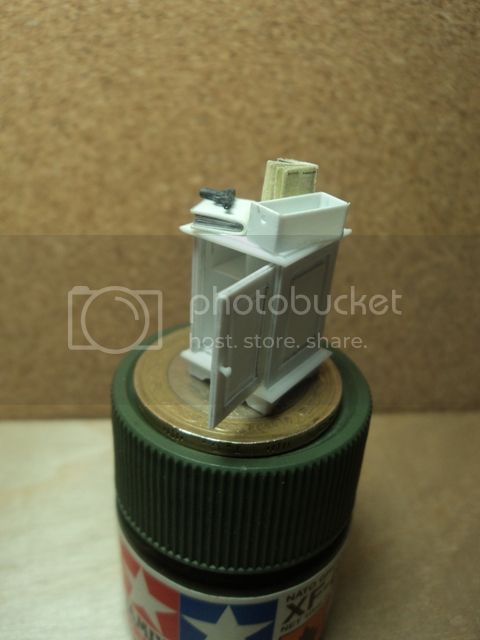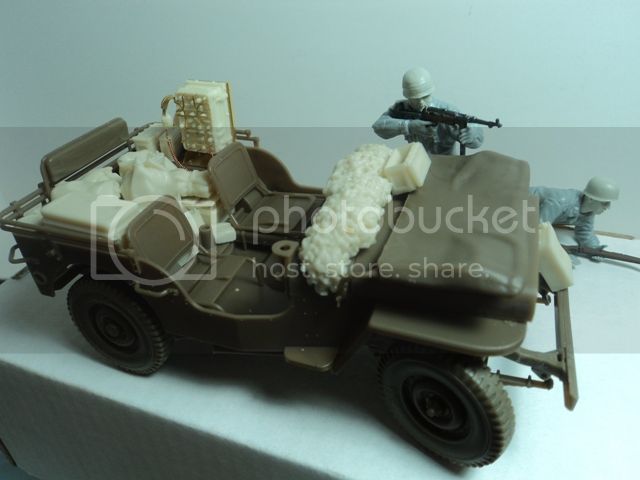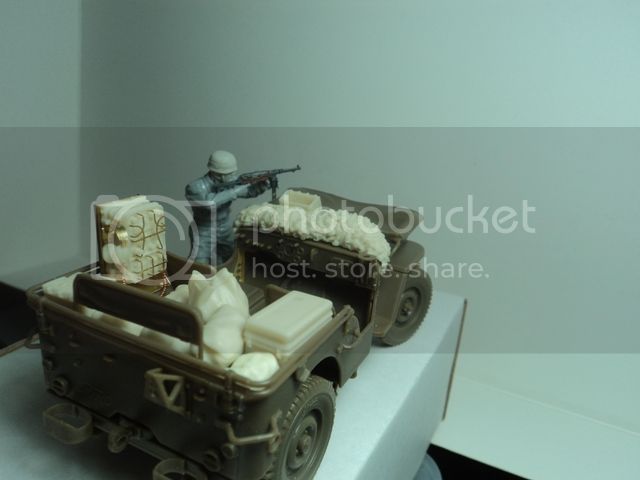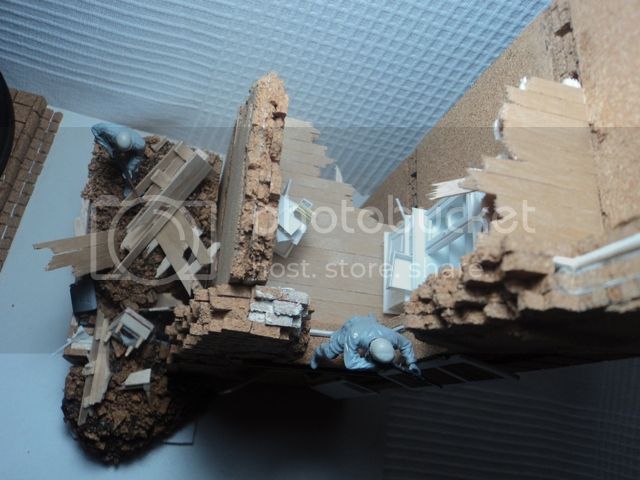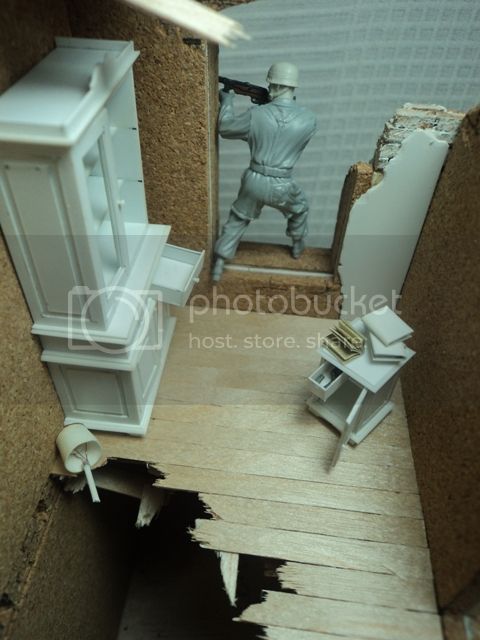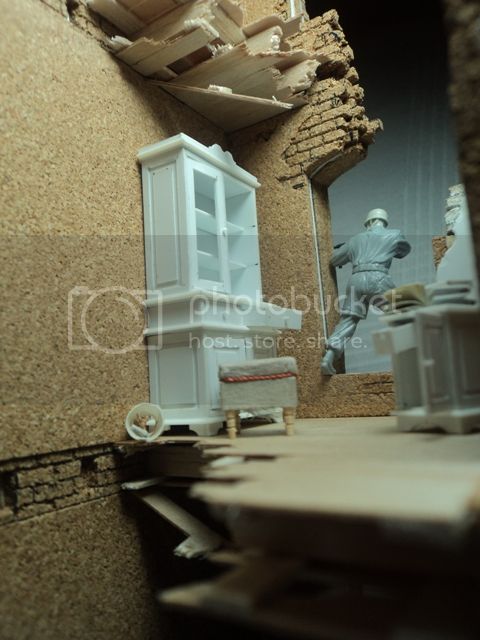The construction of the diorama is really excellent work. I am very impressed. I do question the action a bit, as the Panzerschreck crew is firing from a suicidally close position--it's hard to see how the operator could avoid being killed by his own rocket. It would make more sense for them to remain hidden until the vehicle advanced further down the street, and then take a shot from a safer distance.
Regarding the American uniforms, the tones of the green jacket and the brown trousers have been reversed. The M1941 field uniform consisted of a dark brown wool trouser, a brown wool shirt (lighter weight, slightly different color), and a light green or tan jacket, known as a Parson's Jacket (after its designer), which somewhat resembled a civilian windbreaker. In black and white photos, the jacket appears lighter than the trousers, and this is borne out when you see surviving examples. When troops had to prep their uniforms for inspection, they would use coffee to cover stains on the wool trousers, so the color was quite strong. There was also a brown wool M1941 jacket with skirts, patch pockets and brass buttons, which matched the pants, but this was considered a Class A item to be worn in rear areas or on leave (troops stationed in the UK are sometimes seen wearing them, or staff or MP troops in secure rear areas on the continent). Likewise, the tanker jacket was also a very light shade of green or tan.
In late 1944, the M1943 uniform became more common, which had a longer jacket, and was an olive (slightly brownish green) color (early examples were a shiny sateen fabric, but a dull poplin was soon substituted). Trousers and jackets matched in this uniform.
The M1944 uniform had a waist length jacket based on the British Battledress Uniform, but apart from rear area personnel (including General Eisenhower, who gave it its characteristic nickname, the Ike Jacket), almost nobody got them until after VE Day. Most examples were brown wool, but some had an olive tone.
